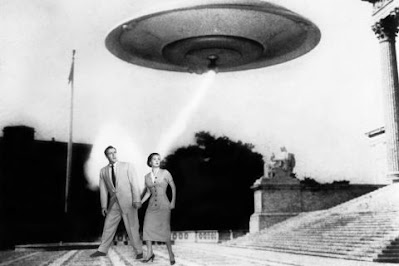Robert E. Howard was born on 22 January 1906, the son of an itinerant doctor, which doesn't sound like a real job, but, then, we're talking about Texas. In the postwar boom, Dr. Howard's finances improved enough that he was able to settle his family in Cross Plains, Texas, where his son died seventeen years later by his own hand on 11 June 1936, predeceased by his mother.
Howard is best known to posterity as the creator of Conan the Barbarian, but his turn to the nascent "Sword and Sorcery" genre was initiated in 1928 by a hundred-dollar sale to
Weird Tales os a story featuring "Kull of Atlantis." Unfortunately, the success of that story was a fluke. While Kull is a literary prototype of Howard's much more popular character, Conan the Barbarian, Howard sold no further Kull stories in his lifetime. Four years later, a rewritten "Kull" story, now featuring Conan, was equally successful and launched that character into the pulp magazines.
Conan was popular enough to almost escape the pulp ghetto, winning a book contract for Howard from a British publisher. Unfortunately, the press failed and Conan the Conqueror finally came out from Gnome Press, in 1950.
Kull wasn't only a literary precursor to Conan. Howard made an explicit family connection in an unpublished essay, "The Hyborian Age," which lays out his prehistoric imaginarium in some detail, further hinting at a connection with some of his other characters, notably
Cormac Mac Art, a "Gaelic pirate" of the time of King Arthur, and not the quasi-historical High King of Ireland. The comic panel opposite makes Cormac the descendant of Kull's sidekick, Brule the Spear Slayer, but close enough, because Brule is the reason for this digression.
"
The Hyborean Age" presents us with a prehistory of the Earth that is catastrophism on steroids. Kull lives about 20,000BC, and is brought up on the barbaric island continent of Atlantis, to the east of the Pictish Isles. Further east is a blobby continent in place of Eurasia, where (Western) humans fight evil serpent-men. Some time later, but after Atlanteans and Picts have colonised the northwest bit of the blobby continent, catastrophe reshapes geography and causes the collapse of civilisation, such as it is. The Picts and Atlanteans became barbaric, the Atlanteans becoming Cimmerians, Conan's people. Another catastrophe brings an end to the age of Conan adventures, and reshapes the geography of Eurasia one more time, so that the Picts and Cimmerians are isolated on what becomes the British Isles, now as Celts, and, well, Picts.
In Howard's writing, although not in the published fan fiction he has inspired, the later Picts are notably more barbaric than the Cimmerians, almost to the point of being subhuman. In defence --somewhat-- of Howard, this is the Picts of popular history at the time that he was writing. Speakers of a non-Indo-European language, of "Asiatic" phenotype, possessed of an unusual, matrilineal legal system, and in some writing, so "degenerate" as to live in holes in the ground, the Picts had become an object of racist fantasy. Of particular interest to this blog is the implication of a connection with North American First Nations, who notably also practiced matrilineal succession and are of Asiatic phenotype.
Well, no. This blog post is inspired by
Siân Grønlie's introduction to his 2006 translation of the
Kristni saga, the story of the conversion of Iceland. Grønlie's introduction discusses both the saga and its precursor, Ari the Wise's account of the conversion of Iceland in the
Islendimgabok, assuring the reader that the lacunae in the two accounts are as important as what is actually said, because these accounts are intended to create an Icelandic nationality, and one of the key features of a national identity is a "collective amnesia" about alternative accounts of national origins.
In this week of nationalism run amok, I have finally found an excuse to talk about Robert E. Howard and the Picts that is actually related to the topic at hand. "Collective amnesia" is a powerful concept, and the Picts may be its most spectacular victim.





